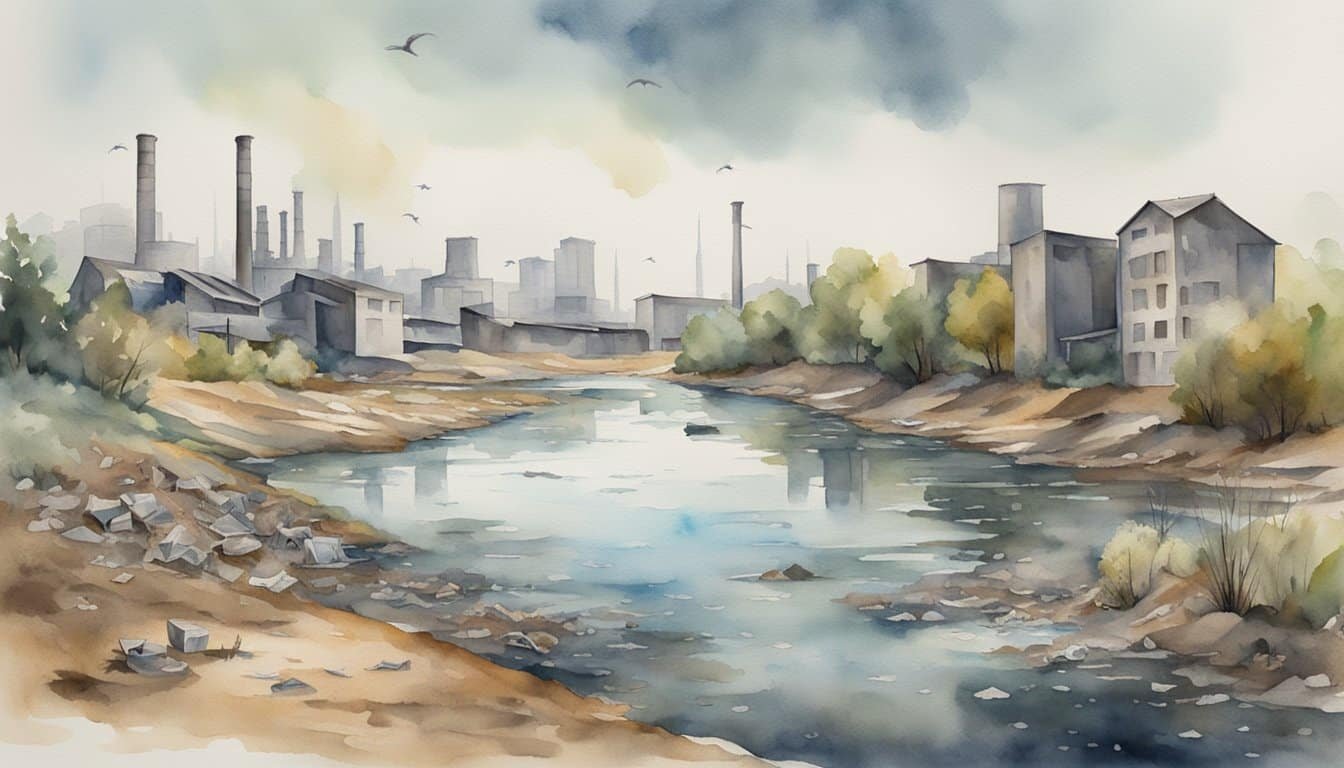Fundamentals of Ecosystems
Ecosystems are intricate and dynamic assemblies where living organisms interact with each other and their environment. Here, the role of energy, nutrients, and various components come to play in a delicate balance, sustaining life on Earth.
Ecosystem Structure and Components
At the very core of an ecosystem is the intricate interplay between its biotic—living—and abiotic—non-living—components. Biotic elements include plants, animals, and microorganisms, each serving their role as producers, consumers, or decomposers. Abiotic factors range from sunlight, soil, and water to air and minerals. Together, these establish a complex structural framework that supports life through various processes and interactions.
Ecosystems can be as vast as an ocean or as small as a drop of pond water. Yet, all rely on abiotic elements; soil provides nutrients and a substrate for plants, while water is essential for all living organisms, acting as a solvent for biological reactions. Sunlight, a cornerstone of energy, drives photosynthesis, the process by which producers like plants convert carbon dioxide into organic matter, while the energy from the sun also regulates the climate and weather patterns, influencing ecosystem dynamics.
Learn more about the different components of ecosystems.
Energy Flow and Nutrient Cycles
Energy flows through an ecosystem beginning at the primary producers, mainly green plants that harness energy directly from sunlight through photosynthesis. This energy is then transferred to various consumers, from herbivores to top-level carnivores. Along this journey, energy is lost as heat at each transfer, following the Second Law of Thermodynamics.
Nutrients, however, cycle within the ecosystem. Elements like nitrogen, carbon, and phosphorus move through biogeochemical cycles, constantly recycled between the living and non-living components. Organic materials—from fallen leaves to animal carcasses—are broken down by decomposers, returning vital nutrients back to the soil, making them available for uptake by plants again.
Ecosystems are maintained by these nutrient cycles and energy flow, establishing a sophisticated web of life that includes everything from the tiniest bacteria to the great blue whale. Food webs further elaborate on these connections, illustrating how matter and energy weave through living organisms in an ecosystem.
Dive into the intricate processes of energy flow and nutrient cycles.
Types and Dynamics of Ecosystems

Exploring ecosystems involves examining the vast array of habitats on Earth—ranging from the sun-baked deserts to the deep ocean trenches—and understanding the intricate dynamics that govern the resilience and functionality of these systems.
Terrestrial and Aquatic Biomes
Terrestrial biomes vary drastically and are primarily defined by climate, which dictates the temperature and precipitation patterns that shape them. For example, forests, spanning from the tundra with its cold-tolerant conifers to the rainforests, support diverse communities of animals, fungi, and microorganisms. Grasslands, another expansive biome, are home to a wealth of grazing herbivores and their predators. Deserts, marked by their arid climate, are habitats for species that have evolved remarkable adaptations to survive extreme conditions.
Aquatic biomes are categorized as freshwater—like lakes, rivers, and wetlands—and marine, which include oceans, coral reefs, and estuaries. While marine ecosystems boast high biodiversity with organisms like fish, coral, and algae, freshwater ecosystems are essential for the life cycles of many species and also for providing water for terrestrial biomes.
Ecosystem Dynamics and Resilience
The resilience of an ecosystem—its ability to withstand and recover from disturbances such as deforestation, pollution, or climate change—hinges on complex interactions among biotic and abiotic factors. Biodiversity is a critical component: diverse communities, with a variety of herbivores, carnivores, omnivores, bacteria, and fungi, are often more resistant to change and better equipped to maintain balance. Understanding ecosystem dynamics is essential, as it addresses how species interactions and environmental factors collectively influence the health of the biosphere.
Disturbances, whether a natural event like a wildfire or human-induced like pollution, can radically alter the structure of an ecosystem. Investigations into conservation and ecosystem dynamics highlight the importance of protecting habitats not only for individual species but for the entire planet. The adaptability of a community in the face of change, whether it is a sudden temperature shift or a gradual process like climate change, illustrates the dynamic nature of both terrestrial and aquatic systems.
Human Impact on Ecosystems

Ecosystems face a myriad of pressures due to human activities, from alterations in energy flows to the loss of biodiversity. These impacts disrupt ecological interactions, affecting both the physical environment and the diverse community of living things.
Conservation and Restoration Efforts
Human-induced changes to ecosystems often necessitate the development of conservation and management strategies to preserve biodiversity and maintain ecosystem services. Scientists focus on restoration efforts aimed at reviving the health and functionality of ecosystems. For example, reintroduction of native species and control of invasive species are crucial steps in restoring the delicate balance within an ecosystem. Restoring forests and wetlands can help stabilize the climate, ensuring that the valuable carbon storage and decomposition services these ecosystems provide are not lost.
Ecological conservation also involves protecting areas of significant biodiversity. Protected areas have been successful in preventing deforestation and habitat loss, ensuring that ecosystem services, such as water filtration and the provision of organic matter, remain intact. These areas often become significant for ecotourism, which can provide economic incentives to sustain preservation efforts.
Impact of Climate Change and Pollution
Climate change and pollution are formidable forces altering ecosystem ecology on a global scale. The increase in carbon dioxide and other greenhouse gases from human activities intensifies climate change, leading to shifts in weather patterns and affecting the size and distribution of habitats. These changes can disrupt food webs and decrease the resilience of biotic factors within ecosystems.
Pollution from chemicals, plastics, and other wastes has profound effects on marine life, often leading to the death of crucial species in food chains or altering their reproductive patterns. Freshwater ecosystems, too, are under siege from pollutants that alter their chemical makeup, threatening the species that rely on these waters for survival. Scientists and environmental managers continue to study these interactions, seeking to mitigate the negative impacts and develop strategies for a sustainable future.

